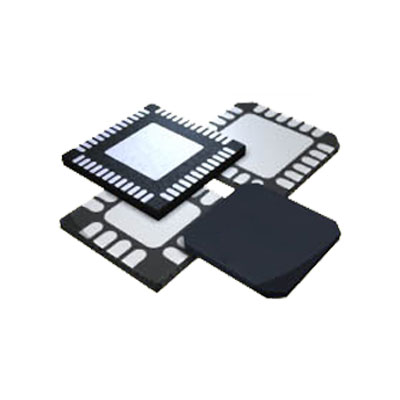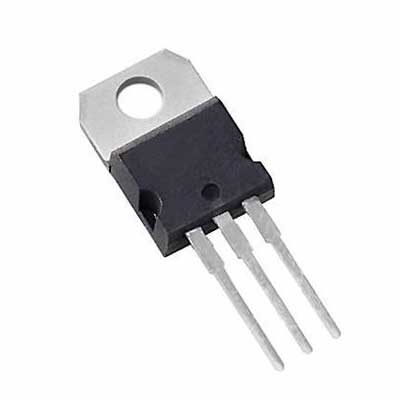Even the most reliable cars require regular maintenance, and Mazda vehicles are no exception. The Battery Management System (BMS) in Mazda monitors the battery's charging and discharging cycles, as well as checks for any potential issues in the battery and charging system, notifying the driver if a problem is detected. With timely maintenance, you can ensure that your Mazda vehicle's battery management system is in top condition, improving the battery's lifespan and overall performance. As many Mazda owners are faced with the most common problems - Battery Management System Malfunction, we will explore the main causes of this and how to effectively fix it.
Mazda's battery management system (BMS) is an advanced on-board computer system designed to monitor and manage the status and performance of a vehicle's battery. It consists of a series of sensors, control unit and software, by measuring the voltage, temperature, current and other key factors of the battery in real time to ensure that the battery is always in the best condition. Its main functions include: battery performance monitoring, battery health assessment, charging control, problem detection and alarm, and safety protection.
Mazda's battery management system is designed to ensure that the battery remains in top condition throughout its useful life. Through precise monitoring and control, BMS maximizes the range of electric vehicles while ensuring safety and comfort.
When Mazda's battery management system malfunctions, it can manifest itself through a variety of symptoms that indicate an underlying problem with the vehicle's battery and charging system. The following are some common symptoms.
Warning light on the dashboard: The most obvious sign is that the "Battery Management System Failure" or "Check Engine" light on the dashboard may come on.
Master Malfunction Warning: When a major problem is detected, it triggers a Master Malfunction Warning on the dashboard, indicating that something is wrong with the vehicle and requires immediate attention.
Exclamation light and orange triangle: If the exclamation light and orange triangle symbol on the dashboard come on together, it means that there is a problem with the vehicle's battery system or charging process.
Engine auto start/stop does not work: The auto start/stop feature ensures that the engine is automatically shut off when the vehicle is stopped and restarts when the driver releases the brake. BMS failure may affect this function.
Charging system failure: The BMS monitors the charging process of the vehicle battery. If the BMS fails, it may cause a "Charging System Failure" warning message to appear on the instrument panel. This indicates that the battery is not being charged properly, affecting the battery health.
The battery does not charge properly or discharges too quickly, resulting in reduced driving range and overall battery efficiency.
The battery charge indicator light on the instrument panel may display incorrect information.
The charging process may become irregular, causing difficulty or prolonged charging of the battery.
The vehicle may suddenly lose power or not start at all due to a low battery.
A faulty BMS may not be able to properly regulate the battery temperature, causing the battery to overheat, negatively impacting battery life and performance.
Engine system failure: Occasionally, a malfunctioning BMS may trigger an "engine system failure" warning on the instrument panel, which indicates that a BMS problem is affecting other systems in the vehicle.
Reduced efficiency of regenerative braking: Mazda EVs use regenerative braking to charge batteries during deceleration. A malfunctioning BMS may result in reduced efficiency of regenerative braking.
Batteries play an important role in Mazda, we should pay attention to the battery management system and make sure it works well as keeping the system working well is of great importance to the normal working of your cars. Next, we will talk about the factors that can affect the function of the battery management system in Mazda.
Age of the Main Battery: As the main battery in the vehicle ages, its capacity and performance may degrade over time. A worn-out battery may not hold a charge as effectively, leading to inaccurate readings and affecting the BMS's ability to manage the battery efficiently.
Alternator Issues: The alternator is responsible for charging the vehicle's battery while the engine is running. If the alternator fails or malfunctions, it can result in inadequate charging of the battery, affecting the BMS's ability to monitor and regulate the charging process.
Incorrect Battery Type: Using a battery that is not compatible with the vehicle's specifications can lead to improper communication between the battery and the BMS. This can result in incorrect readings and malfunctioning of the BMS.
Bad Ground Connection: A poor or corroded ground connection can disrupt the flow of electrical signals between the battery and the BMS, leading to inaccurate readings and potential BMS malfunctions.
Battery Terminals: Loose or corroded battery terminals can hinder the flow of electricity between the battery and the BMS, causing disruptions in data transmission and impacting the BMS's performance.
i-ELOOP Issues: Mazda's i-ELOOP (Intelligent Energy Loop) system is designed to capture and reuse energy during deceleration. Issues with this system, such as faulty sensors or electrical components, can lead to BMS malfunctions.
Short Trips: Frequent short trips without giving the battery enough time to fully charge can lead to undercharging, reducing the battery's capacity and causing BMS inaccuracies.
PCM (Powertrain Control Module) Software Issue: The PCM is responsible for managing various vehicle systems, including the BMS. Software glitches or outdated PCM firmware can affect the BMS's functioning.
Drive Belt (Serpentine) Problems: The serpentine belt powers the alternator, which charges the battery. If the drive belt is damaged or worn, it can lead to insufficient charging, impacting the BMS's performance.
Electrical or Sensor Failures: Failures in BMS sensors or other electrical components can lead to inaccurate data readings and disrupt the BMS's ability to monitor and control the battery effectively.
Improper Battery Maintenance: Neglecting regular battery maintenance, such as not keeping the battery clean or failing to check electrolyte levels (if applicable), can contribute to BMS malfunctions over time.
Physical Damage or External Factors: External factors like exposure to extreme temperatures, water damage, or accidents can physically damage the battery or BMS components, leading to malfunctions.
Overcharging or Over-Discharging: If the BMS fails to regulate the charging process correctly, overcharging or over-discharging the battery can occur, resulting in battery damage and potential BMS malfunctions.
If a warning message indicates a serious problem or recommends stopping the vehicle, stop the vehicle in a safe place and shut off the engine. Do not drive the vehicle until the problem is resolved.
Check the battery: First, you should check the battery for damage, loose connections, or corroded terminals.
Verify the alternator: Test the output voltage of the alternator to ensure it is functioning properly and is providing an adequate charge to the battery.
Perform a BMS reset: In some cases, a soft reset of the BMS may clear the warning message. To do this, turn off the ignition, remove the key, and disconnect the negative battery terminal for a few minutes. Reconnect the negative terminal and start the vehicle to see if the warning message clears.
Check for software updates: The vehicle's software and firmware should be up to date.
Repair Faulty Sensors or Components: If a BMS sensor or component is faulty, it may need to be repaired or replaced.
You need to check the causes mentioned in the above part to find out the problems and then solve these problems. If you are unsure of the cause or cannot resolve the problem, it is best to seek help from a professional technician.
Maintaining Mazda vehicles requires attention to potential problems. Identifying the cause of BMS failure is critical to maintaining battery health and performance. By taking countermeasures, Mazda owners can maintain battery health and performance, effectively prevent BMS failure, and extend battery system life. At the same time, this will enhance the overall driving experience, ensuring safety and comfort while driving.
Why is a BMS important?
A BMS is crucial for maintaining battery health, safety, and performance. It helps prevent conditions that could lead to battery failure, reduced lifespan, or safety hazards such as fires or explosions.
How does a BMS balance cells in a battery pack?
Cell balancing can be achieved through passive balancing (dissipating excess energy as heat) or active balancing (redistributing energy among cells). Both methods aim to equalize the voltage of each cell in the pack.
What types of batteries can use a BMS?
BMS can be used with various types of batteries, including lithium-ion, nickel-metal hydride (NiMH), lead-acid, and others. The design and features of the BMS may vary depending on the battery chemistry.
Can a BMS be used in electric vehicles (EVs)?
Yes, BMS is essential in EVs to manage the large battery packs, ensuring safety, efficiency, and longevity. It plays a critical role in the vehicle's overall performance and range.
What is state of charge (SOC) in a BMS?
SOC is a measure of the current charge level of the battery relative to its capacity, expressed as a percentage. It helps users and systems understand how much energy is available in the battery.
Hot News









